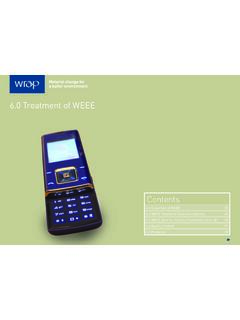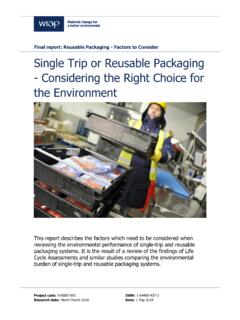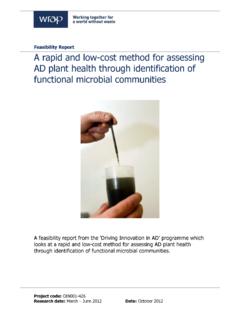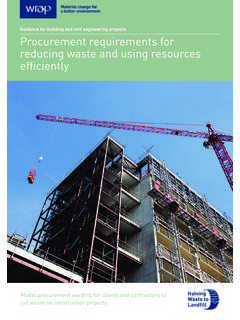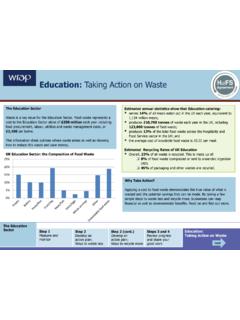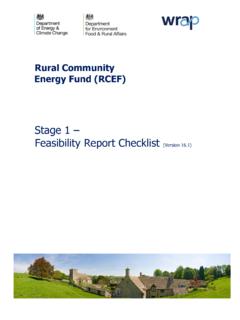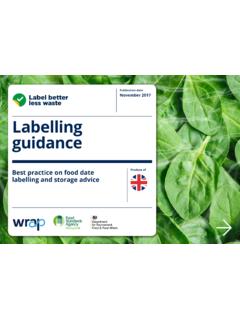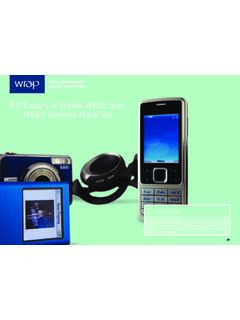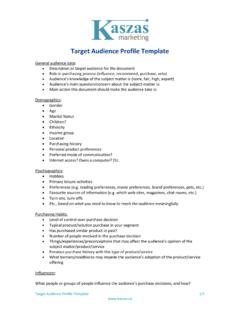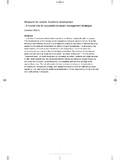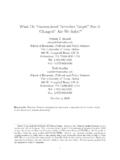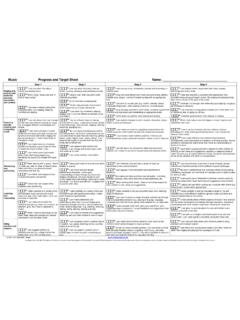Transcription of 1.0 Target Audience Identify your audience - WRAP
1 CASE STUDY: Target audiences The Staffordshire Recycling Partnership campaign covered the whole county. The Target audiences for the campaign were: Socio-demographic groups needing the most motivation and those most likely to support/use new services (75% of effort) Niche groups that had proved hard to engage in Staffordshire s Blue collar roots Acorn group (20% of effort) and Asian communities (5% of effort) The partnership campaign ran from September 2006 to March 2008 with a generic campaign to Target the major Audience and tailored marketing approaches for the niche groups. WRAP BCLF Case Study: Staffordshire Waste Partnership Target Audience Identify your Audience This section helps you to Identify and describe your Target Audience .
2 There are four main groups to consider: Householders - the main focus of your communications Internal groups - your staff, senior officers, elected members, other council staff who need to know about your communications plan and may be able to help External groups - such as the media, community groups, other local authorities Specific subgroups community groups, religious and cultural groups, potential partners to help communicate your messages such as caretakers, landlords and housing associations You must be clear about the Target Audience for your communications and keep them as the focus of your effort at all stages. This section looks at each main Audience in turn (householders, internal and external groups, specific groups and hard to reach/engage audiences) and ends with a review of their lifestyles.
3 It will help you Identify the Target audiences relevant to your communication plan and to understanding them (who they are, where they live, what their lifestyle is like, what their issues and barriers to recycling are). This is important because your Target audiences must be at the heart of your thinking about your messaging, overall strategy, communication methods and activities. All householders Use the information you have already gathered to draw up a complete description of your Target Audience . You may need to split them up into groups in a process known as Audience segmentation. An Audience segment is a subgroup of people with broadly similar characteristics or needs. For example, people living in a leafy suburban street with large detached houses are likely to be very different to people living in a high rise council flat.
4 Their levels of income and car ownership will be different, they will consume different media eg radio, newspapers, TV, magazines etc and have different shopping and travel to work patterns. They may have different attitudes towards the environment and recycling. As a result, different methods and messages might be required to reach and effectively communicate with these distinct groups. You should assess the following characteristics: Which are the most significant in terms of size and distribution? What are their life-stages? For example, young and single, families with young children, mature couples etc What are their similarities or differences? Are there any areas where particular groups or types of people are concentrated?
5 Any other characteristics? You should use the information gathered as part of your background research as part of Section 1 to look at your Target audiences. Local knowledge can be very useful in this process but opinions and anecdotal evidence should always be supported by factual evidence. A useful idea is to use a geo-demographical segmentation system like ACORN or MOSAIC that Identify different Audience groups and map them. This can help you to see where different types of people live and cross-reference other information against them eg anecdotal information from crews about areas of poor performance. Many local authorities use systems such as ACORN or MOSAIC for strategic planning and other purposes and you may be able to use it find out from colleagues or other departments.
6 You should use these systems to support and refine the population and Audience information you have already gathered look at the whole picture you get using all the information at your disposal and do not rely too much on any single source. This process will help you to understand who you are talking to, how to talk to them and where they are, which in turn, will help you develop appropriate messages, which communication methods to use and where to run your activities. You could also compare your information to neighbouring councils, and to regional and national figures. Are there any major differences that help to Identify issues or potential opportunities for your services and your communications? What do you know about their barriers to recycling?
7 Communications and operational services need to Identify , understand and address the barriers to recycling that their Target audiences (local householders) face. Use your Audience research information and the known barriers/issues in your area to match your audiences against recycling competence levels and barriers that research by WRAP has identified. Recycling competence levels: 1. 2. 3. 4. Recycling unaware Aware but inactive Contemplated but not engaged Unreliable 5. 6. 7. Trying their best Broadly competent The Complete Recycler Source: WRAP Barriers to Recycling report Barriers to recycling: Situational barriers Not having adequate containers, a lack of space for storage, unreliable collections, unable to get to bring sites.
8 Behaviour Not having the space or systems in place in the home to recycle, being too busy with other preoccupations, difficulties in establishing routines for sorting waste and remembering to put it out. Lack of knowledge Knowing what materials to put in which container, and understanding the basics of how the scheme works. Attitudes and perceptions Not accepting there is an environmental or other benefit, being resistant to householder sorting or not getting a personal motivational reward from recycling Source: WRAP Barriers to Recycling report The recycling competence levels are roughly equivalent to ACORN categories 1, 2, 3, 4 and 5 and this information can be used to map possible recycling competence levels and barriers in your local authority area.
9 This will help you gain a better understanding of the people you wish to Target by identifying likely behavioural and lifestyle issues which in turn can help to develop targeted communications activities and messages to address the issues of specific groups of people in particular areas. It is important to point out, however, that whilst tools like ACORN or MOSAIC can be useful for profiling Target audiences, it is not a perfect science and representatives from all types of people will be found in their Audience segments. It does give a broad indication of the likelihood that the issues highlighted will occur amongst these groups. However, at an individual level, people will have different barriers or combinations of more than one barrier and they may have different messaging needs and require different communication methods to reach them.
10 Audience segmentation should not be seen as a replacement for detailed local knowledge and research and should be used in conjunction with other communication planning tools such as surveys and focus groups. You should also be wary of giving in to the idea that Audience segmentation is the answer . On its own it isn t and using it exclusively to develop your communications can lead you astray making you overlook more mundane yet effective communication methods and activities in favour of activities better suited for national or regional mainstream consumer advertising or marketing campaigns. For example, running a clever and expensive advertising campaign designed to Target a particular and widely distributed ACORN group when a simpler and more modest advertising campaign coupled with some form of direct marketing might have been more effective.
